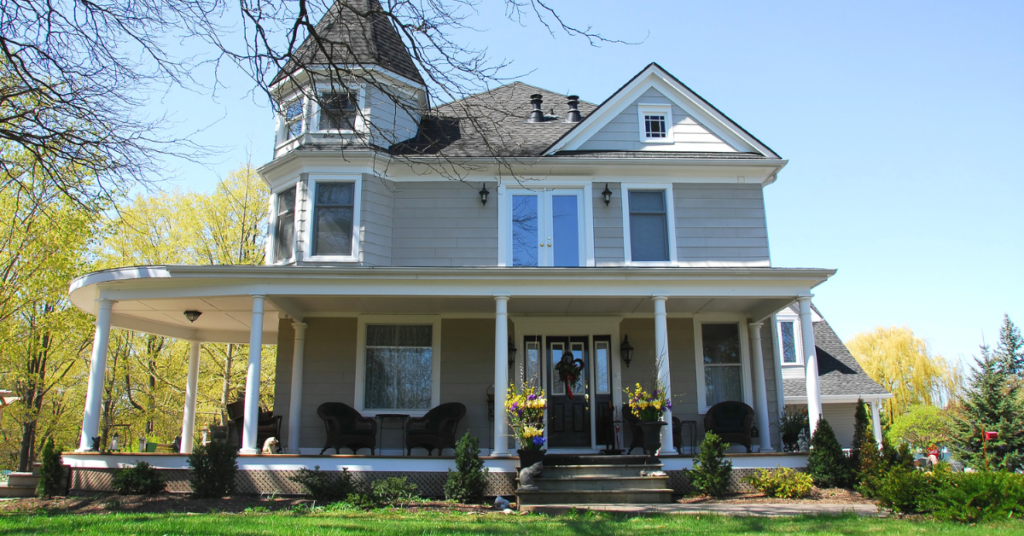Siding Maintenance Tips for Historic Homes in Oregon

We know that owning a historic home in Oregon is both a joy and a responsibility. Homes in cities like Albany, Corvallis, and other parts of the Willamette Valley have a unique charm, but they also require special care to preserve their character and value. One of the most important aspects of maintaining a historic home is taking care of its siding. The siding isn’t just about curb appeal—it’s a critical element in protecting the structure itself. Here are some tips we’ve gathered from our decades of experience working with historic homes in the area.
Understanding the Unique Needs of Historic Home Siding
Historic homes have different needs than newer properties, particularly when it comes to siding. Many of the homes we’ve worked on in Albany and nearby areas feature original wood siding—materials that require a bit more attention than modern alternatives like vinyl or fiber cement. The siding on these homes wasn’t just chosen for looks; it was selected for its durability and ability to age gracefully with the house.
Common materials you’ll find on historic homes include wood clapboards, shingles, and sometimes stucco. These materials were designed to expand and contract with the home, a feature that modern siding often lacks. Understanding these differences is key to maintaining your home’s historic integrity while ensuring it remains well-protected.
Routine Inspections: A Must for Preservation
Regular inspections are the cornerstone of good siding maintenance. At Stutzman & Kropf, we recommend inspecting your siding at least twice a year to catch any issues early. Historic siding can be particularly vulnerable to cracking, peeling, and moisture damage—especially in Oregon’s wet climate.
When inspecting your siding, pay close attention to areas where the paint is peeling or where cracks have formed. Moisture is your siding’s worst enemy, so be on the lookout for any signs of water damage or rot. The north-facing sides of your home are especially prone to mildew and other moisture-related issues because they don’t dry out as quickly as other sides. Early detection can prevent small problems from becoming major repairs.
Cleaning Techniques for Historic Siding
Cleaning the siding on a historic home is all about using the right techniques to avoid causing damage. Older materials like wood and shingles can be fragile, so we recommend avoiding high-pressure washing and harsh chemicals. Instead, opt for a soft brush or sponge with a mild detergent. This approach will help remove dirt, mold, and mildew while preserving the integrity of your siding.
For tougher stains, try using a solution of water and vinegar. Be sure to rinse well afterward to ensure no residue is left behind. Also, try to avoid cleaning your siding on hot, sunny days, as this can cause cleaning solutions to dry too quickly, potentially leading to streaks or damage.
Repairing and Replacing Siding
When it comes to repairs, knowing whether to fix or replace is crucial. Small cracks or holes in wood siding can often be easily filled, sanded, and repainted. However, if you’re seeing significant rot or damage, it might be time to consider replacing portions of your siding.
One challenge with historic homes is finding materials that match the original siding while offering modern durability. At Stutzman & Kropf, we focus on providing siding options that closely replicate the appearance of traditional materials, ensuring that your historic home maintains its original charm while benefiting from enhanced protection against the elements.
Protecting Your Siding from the Elements
Oregon’s weather can be tough on siding, but there are steps you can take to protect your historic home. Keeping your siding well-sealed and painted is essential. A fresh coat of paint not only refreshes your home’s appearance but also acts as a protective barrier against moisture. We recommend using high-quality, breathable paint that’s suited to your siding material.
Proper drainage is another key aspect of siding maintenance. Ensuring that your gutters are clean and functioning correctly will prevent water from spilling over and causing damage to your siding. Poor drainage can lead to water pooling at the foundation or splashing back onto the siding, which can cause significant issues over time.
Hiring a Professional for Historic Home Siding Maintenance
While some aspects of siding maintenance can be done on your own, there are times when it’s best to call in the professionals—especially for historic homes. At Stutzman & Kropf, we understand the unique challenges that come with maintaining these properties. Our team has extensive experience with historic homes throughout the Willamette Valley, and we’re dedicated to providing solutions that preserve your home’s character while ensuring its longevity.
When you choose a contractor, look for one with a proven track record of working on historic properties. They should understand local regulations and have experience with the specific materials used in older homes. We’re proud of our history in the area and our ability to deliver quality workmanship that stands the test of time.
Safeguarding Your Historic Home’s Legacy Through Expert Siding Care
Maintaining the siding on a historic home in Oregon is no small task, but it’s essential for preserving the beauty and integrity of your property. At Stutzman & Kropf, we’re here to help you every step of the way—from regular inspections to repairs and replacements. If you’re in Albany or anywhere in the Willamette Valley and need expert advice or assistance with your historic home’s siding, don’t hesitate to reach out. We’re committed to helping you protect and preserve your home’s legacy.
#
This article was originally published on StutzmanandKropf.com. For all of your Oregon roofing needs, give us a call today.
